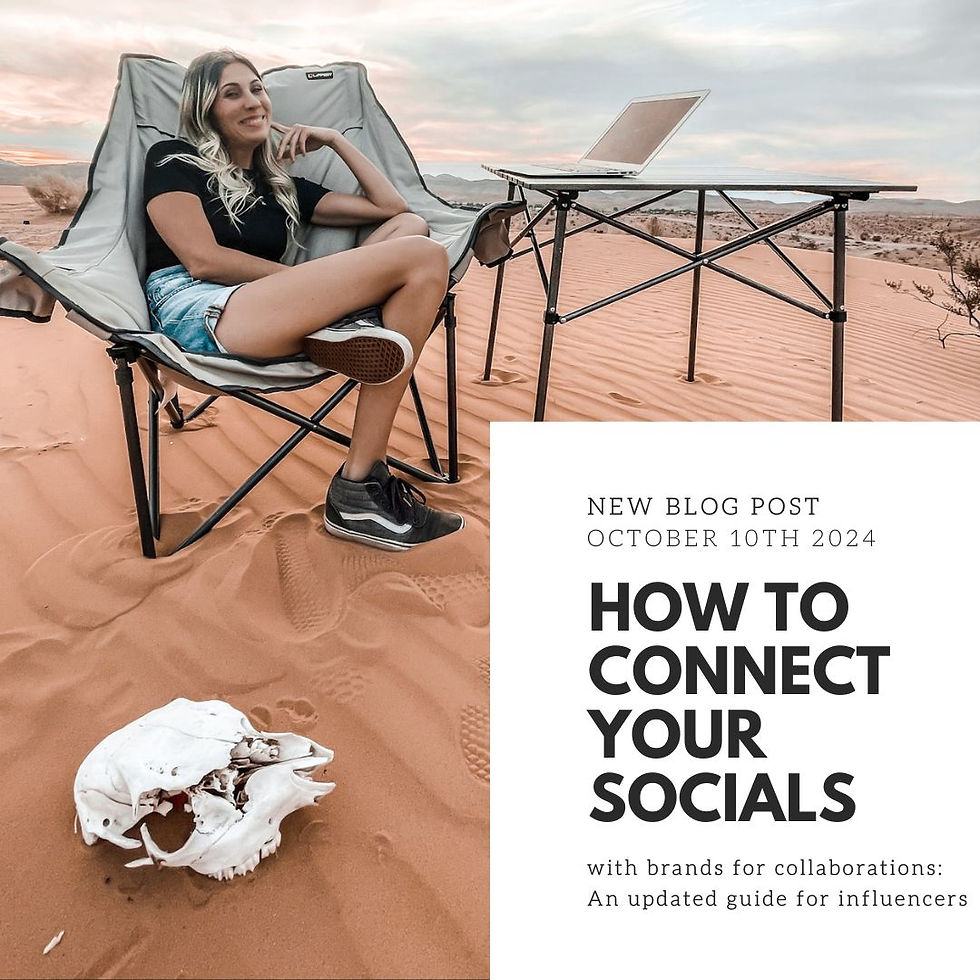From Partner to Afterthought: The Cost of Neglecting Your Influencer Program
- Christian Axness

- Aug 29, 2024
- 3 min read
As an RV and outdoor influencer with nine years of experience, I’ve had the pleasure of working with numerous brands in the industry. These partnerships have ranged from one-off collaborations to long-term engagements. However, not all of them have been success stories. In fact, one particular partnership, which lasted a full 12 months, stands out not for its success, but for how profoundly it missed the mark.

The Promise vs. The Reality
When this well-known RV brand approached me, the excitement was mutual. We both saw potential in the partnership, expecting it to drive engagement, increase brand awareness, and, ultimately, convert my audience into loyal customers. Yet, as the months rolled on, it became clear that the partnership was not living up to its potential. Why? Because the brand lacked a strong influencer program.
Mistakes That Cost Us Both
Looking back, several key mistakes stand out that ultimately led to the partnership's downfall:
Lack of Communication: From the beginning, communication was sporadic at best. There was no clear point of contact, and emails often went unanswered for weeks. This left me feeling unsupported and unclear about the brand’s expectations.
No True Partnership: A successful influencer partnership is built on collaboration. However, in this case, the brand treated me more as an afterthought than a partner. There were no brainstorming sessions, no feedback loops, and no sense of shared goals. Instead, I was handed a vague set of guidelines and left to figure things out on my own.
Feeling Unappreciated: As an influencer, I pour a lot of effort into creating authentic and engaging content. But without any acknowledgment from the brand—no reshares, no mentions, no public appreciation—it felt as though my work was going into a void. This not only demotivated me but also weakened the impact of the campaign.
No Strong Marketing Plan: The brand's lack of a cohesive marketing strategy that included influencer-generated content was glaring. Despite the content I created, it was never leveraged effectively. The brand had no plan to amplify our efforts, resulting in minimal reach and engagement.
The Lessons Learned
These issues could have been easily avoided if the brand had a robust influencer program in place. Here’s how:
Clear Communication Channels: Having a dedicated point of contact and regular check-ins would have ensured that both parties were aligned and any issues could be addressed promptly.
Collaborative Partnership: A strong influencer program fosters collaboration, allowing both the brand and the influencer to bring ideas to the table and work towards common goals.
Recognition and Appreciation: Acknowledging the influencer's efforts, whether through reshares, mentions, or even just a thank-you, goes a long way in fostering a positive and productive relationship.
Strategic Marketing Plan: A well-thought-out marketing plan that includes influencer content is crucial. This ensures that the content reaches its maximum potential, amplifying both the brand's and the influencer's efforts.
The Bottom Line
In the end, the partnership didn’t deliver the results either of us had hoped for—not because of a lack of effort, but because the brand wasn’t equipped with a strong influencer program. This experience taught me the importance of having the right structures in place from the beginning. For brands looking to partner with influencers, it's essential to invest in a well-defined program that includes clear communication, collaboration, appreciation, and strategic planning. Without these elements, even the best-laid plans can fall flat.
If you’re a brand looking to leverage influencers to elevate your presence, take this as a cautionary tale. Build a strong foundation, and the results will follow.



Comments